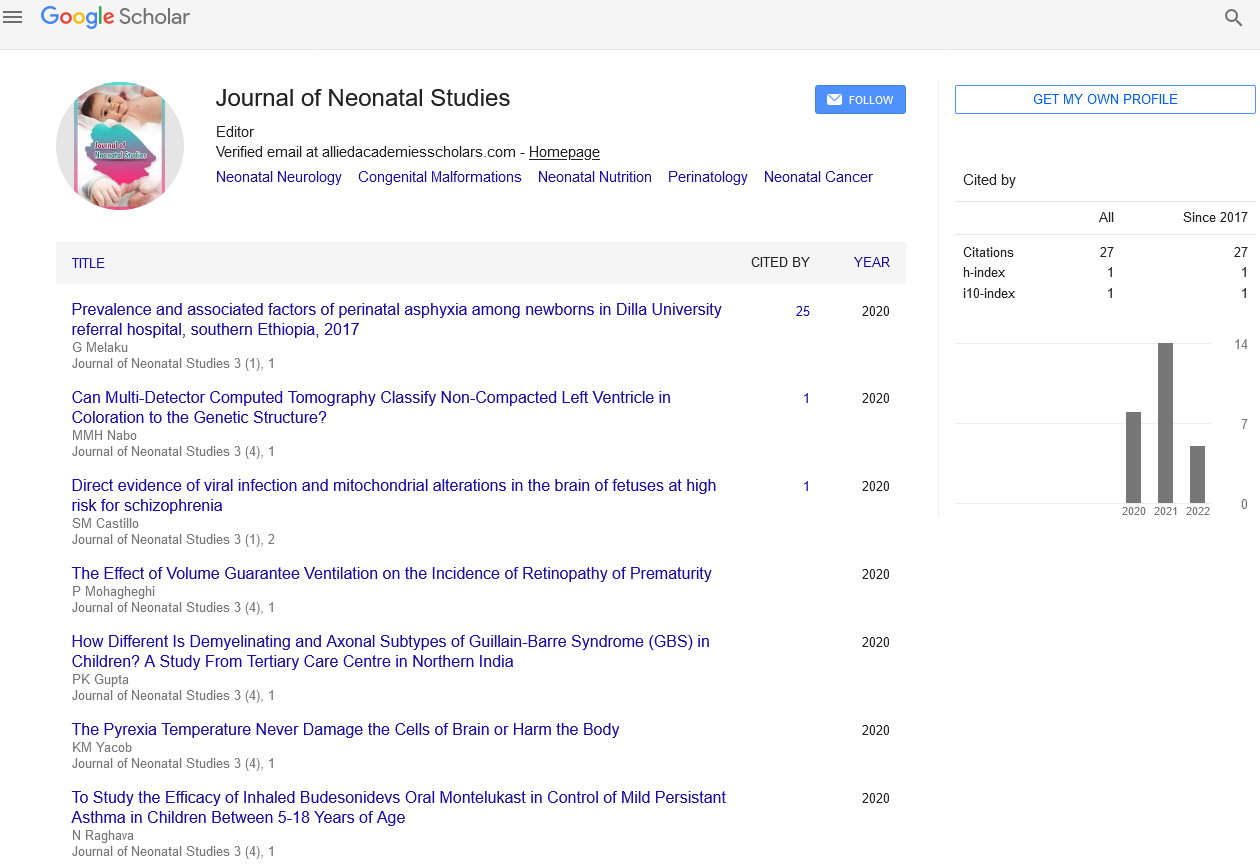Perspective - Journal of Neonatal Studies (2024) Volume 7, Issue 4
Autism and Screen Time in Children: Navigating the Digital World for Children on the Spectrum
- Corresponding Author:
- Chau Bui
Department of Preterm Care, Pham Ngoc Thach University, Vietnam
E-mail: chaubui@en.pnt.edu
Received: 03-Jul-2024, Manuscript No. JNS-24-150487; Editor assigned: 05-Jul-2024, PreQC No. JNS-24-150487 (PQ); Reviewed: 19-Jul-2024, QC No. JNS-24-150487; Revised: 20-Aug-2024, Manuscript No. JNS-24-150487 (R); Published: 27-Aug-2024, DOI: 10.37532/JNS.2024.7(4).243-244
Introduction
In today’s increasingly digital landscape, the relationship between autism and screen time has become a topic of intense scrutiny and debate among parents, educators, and researchers alike. As technology continues to permeate every aspect of our lives, understanding its impact on children with Autism Spectrum Disorder (ASD) is crucial for their development and well-being. This article explores the complex relationship between autism and screen time, highlighting both the potential benefits and drawbacks of digital media for children on the spectrum.
Description
Understanding Autism Spectrum Disorder (ASD)
Autism Spectrum Disorder (ASD) is a developmental disorder characterized by challenges with social interaction, communication, and repetitive behaviors. The prevalence of ASD has been steadily increasing, with current estimates suggesting that approximately 1 in 44 children are identified with the condition. Children with ASD often have unique sensory sensitivities and may find comfort in predictable, structured environments.
The rise of screen time
The advent of smartphones, tablets, and other digital devices has led to a significant increase in screen time among children. For children with ASD, screen time usage tends to be notably higher than that of their neurotypical peers. This phenomenon has sparked both concern and curiosity within the autism community, prompting a closer examination of the potential benefits and drawbacks of screen time for individuals on the spectrum.
Potential benefits of screen time for children with ASD
While excessive screen time can have negative effects, it’s important to recognize the potential benefits of digital media for children with ASD. Screen-based activities can offer structured, predictable environments that may appeal to individuals on the spectrum. Many children with ASD find comfort in the repetitive nature of certain digital content, which can help reduce anxiety and provide a sense of control. Additionally, interactive digital tools and applications can serve as valuable learning aids, supporting the development of various skills, including communication, social interaction, and cognitive abilities.
Educational apps and digital tools
Several educational apps and digital tools are specifically designed to cater to the unique learning styles of children with ASD. These tools offer visual supports, personalized learning experiences, and interactive activities that can enhance the development of communication and social skills. For example, apps that focus on social stories, visual schedules, and speech therapy exercises can be particularly beneficial for children on the spectrum.
Potential drawbacks of excessive screen time
Despite the potential benefits, excessive screen time can have negative effects on children with ASD. Research suggests that prolonged screen use may exacerbate certain autism-related challenges, such as difficulties with social interaction and communication. Excessive screen time can limit opportunities for face-to-face interactions, which are crucial for the development of social skills. Additionally, prolonged exposure to screens can lead to sedentary behavior, which can negatively impact physical health.
Finding a balance
Striking a balance between screen time and other activities is essential for the well-being of children with ASD. Parents and caregivers should set clear boundaries and establish screen time limits to ensure that children have ample opportunities for face-to-face interactions, physical activity, and other enriching experiences. It’s important to monitor the content and duration of screen time, ensuring that it is used in a way that supports learning and development rather than hindering it.
Recommendations from experts
The American Academy of Pediatrics (AAP) recommends no screen time for children younger than 18 to 24 months and no more than one hour of screen time per day for children between ages 2 and 5 years. For older children, screen time should be balanced with other activities that promote physical, social, and emotional well-being. Parents and caregivers should also consider the quality of screen time, opting for educational and interactive content over passive entertainment.
Conclusion
Neonatal nursing is a specialized field dedicated to providing comprehensive care for newborn infants during their initial days of life. This crucial period requires skilled nursing intervention to support the transition from intrauterine to extrauterine life and promote the health and well-being of neonates. In this article, we will explore essential nursing guidelines for neonates, covering various aspects of care, from assessment and monitoring to feeding and developmental. support.

